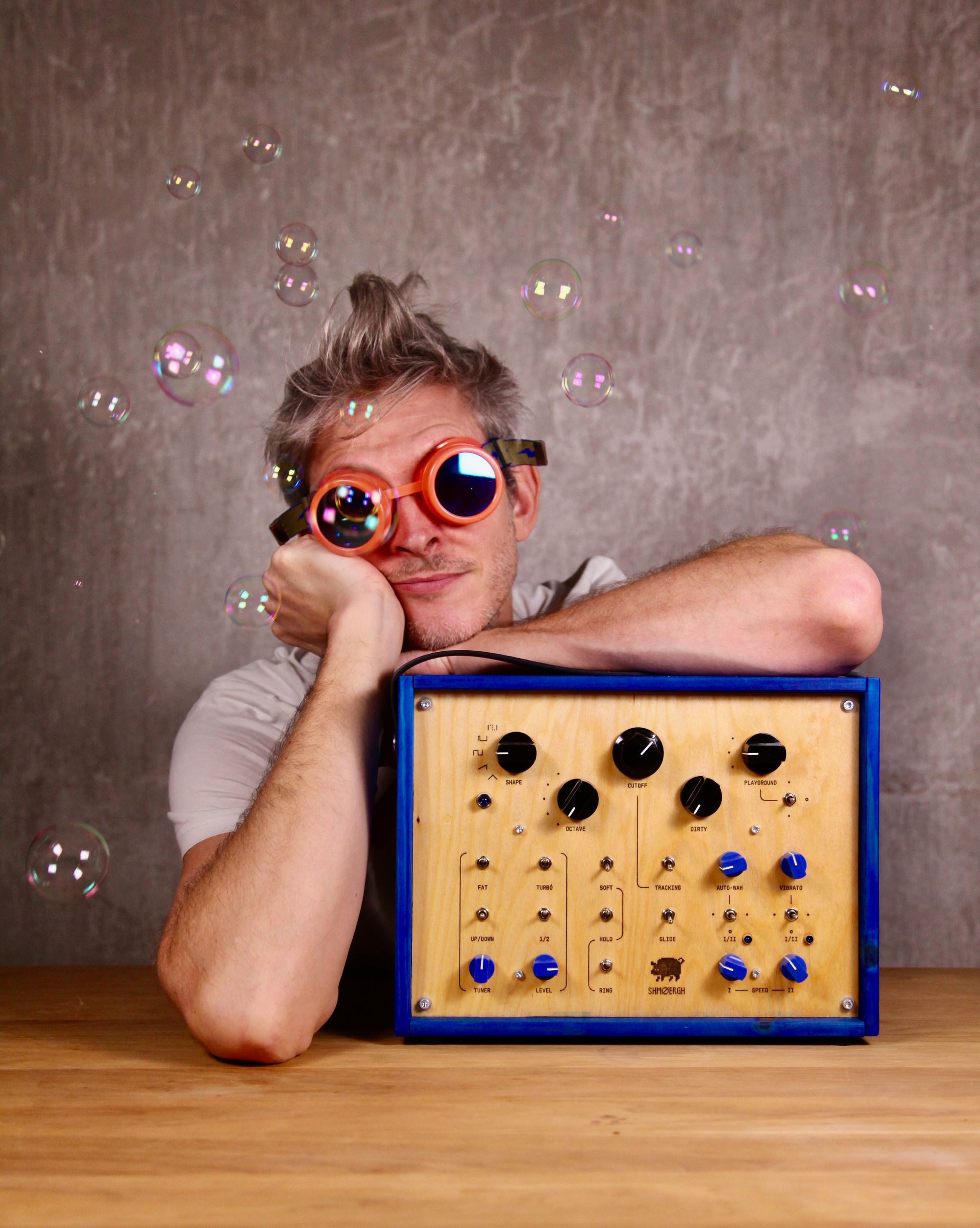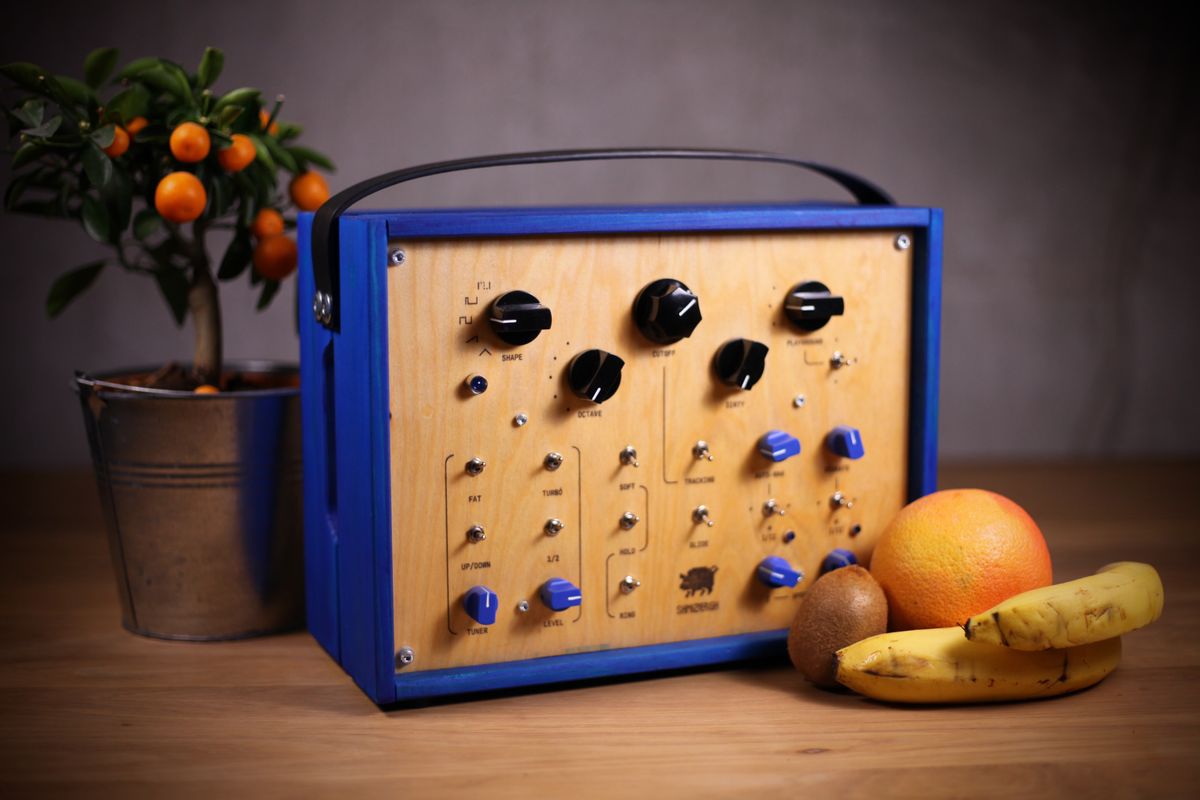
Hog
Hog is a fully analog custom synthesizer which is purposefully limited in function to allow setting sounds quickly for live performances. It has two very accurate oscillators, a super-aggressive low pass filter, a dual LFO and a "Playground" section for various modulations — concept made in collaboration with my homeboy Flame, designed and handbuilt by me.
Sound samples
Background
The concept of the Hog came up due to the cumbersome nature of having tons of knobs on a synth. The problem is that while a lot of knobs gives complete freedom to explore sounds, it also makes it very hard to set a specific sound quickly. It's awesome for studio, experimenting and writing music but it's a pain in the ass for live performances. So much so that Yamás, the keyboard player of Dokkerman uses only digital synths on stage for this exact reason.
Of course this is why most synths have presets. But how would we design a fully analog synth that has no presets and is ideal for live performances?
Why no presets?
Sure, just shove in some presets lol. The thing is to implement presets, every single parameter has to go through a microcontroller via ADCs and DACs which makes the overall design exponentially more complex. Also conversions introduce errors which somewhat degrades sound, although not too much. This is not an issue for digital synths of course.
So we came up with this concept:
- No unwanted surprises—fuck up the sound only if you want to
- Make it relatively fast to get from one sound to another while keeping the synth fully analog
- Musician focused UI that shows what the control does with the sound, instead of their technically-correct-technical-tech-name (tech)
- Limited by design to maintain focus
Interface
The core of the Hog follows the classic subtractive analog architecture: oscillators get mixed, they go through a filter which is shaped by an envelope and optionally modulated by various sources. What makes the synth unique is the interface and the simplicity of setting different sounds. To achieve this simplicity, the parameters are controlled mostly by switches instead of knobs. This purposeful limitation makes it perfect for quickly tuning in sounds that are needed 90% of the time: fat basses, cutting leads, arpeggios and experimental noises or drone sounds.

Fat and dirty
There are two oscillators in the Hog and they share a common octave switch. The main voice is always on, the second voice – which is called "Fat" – can be turned on to beef up the sound. It has a "Turbó™" switch that adds even more richness and overtones. The Fat voice can be set 1 or 2 octaves up or down relative to the base note. Furthermore it can be detuned and it has its own output level setting. This makes the synth's sound source quite versatile and playful.
The "Cutoff" and the "Dirty" knobs affect the filter and — as usual — they have the biggest sonic effect and character on the synth. "Cutoff" is just a traditional low pass filter control while "Dirty" makes the sound more aggressive, funky, overdriven and responsive to keystrokes. It is more than classic filter resonance pot: in the background it also sends more and more envelope to the cutoff simultaneously, combined into a single control.
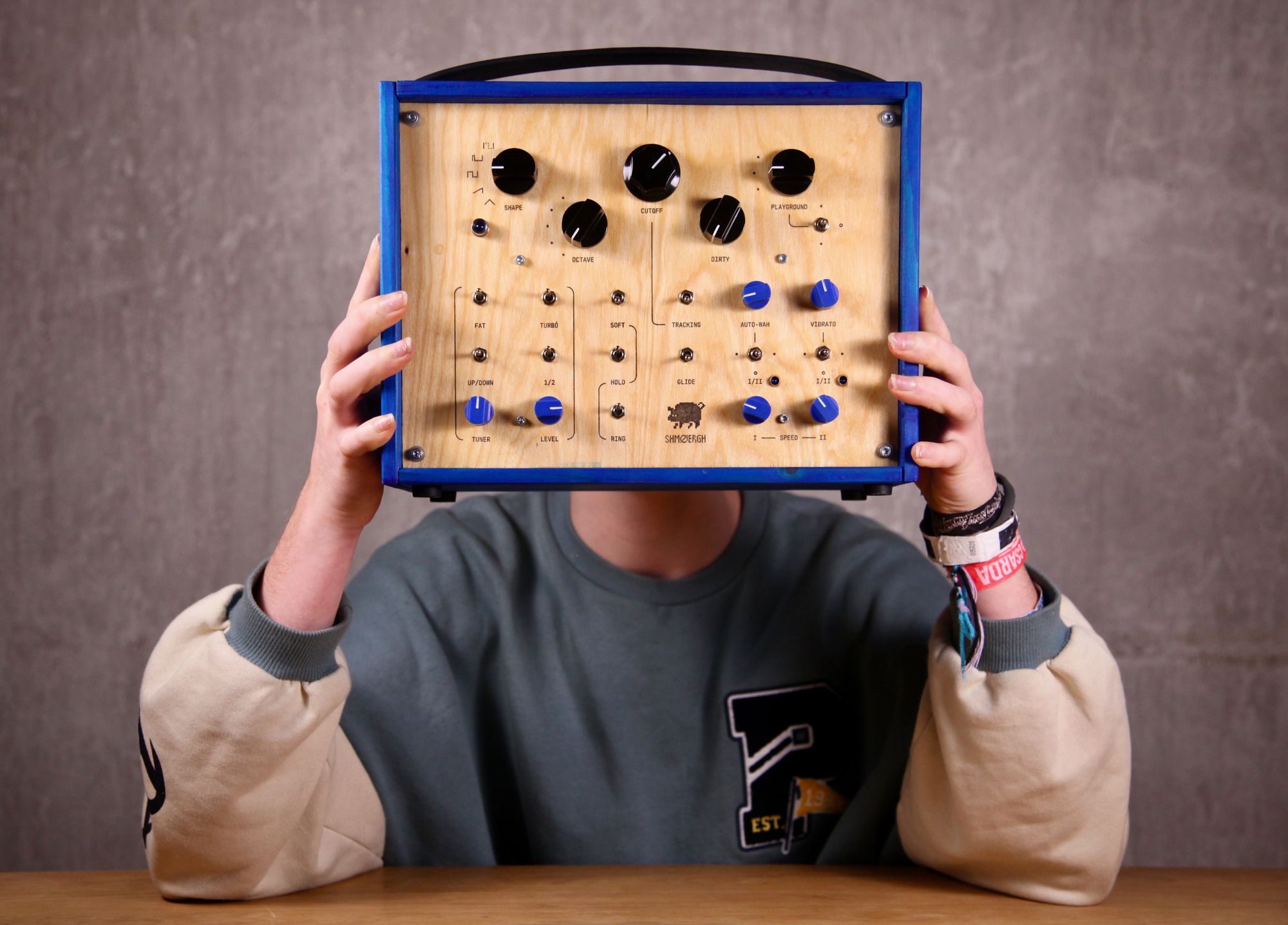
Not your regular envelopes
ADSR is generally a hard concept: it mixes time (Attack, Decay, Release) and volumes (max level and Sustain) in a very technical way and if your brain is not wired to think comfortably in these combined dimensions then you'll have a hard time using it. And even if you can wrap your head around it, without presets it's fairly slow to go from one sound to another. So we abstracted the whole concept to three musically meaningful switches: "Soft" makes the beginning of the sound a little softer, "Hold" keeps the note until you press the key and "Ring" makes the end of the sound ring.
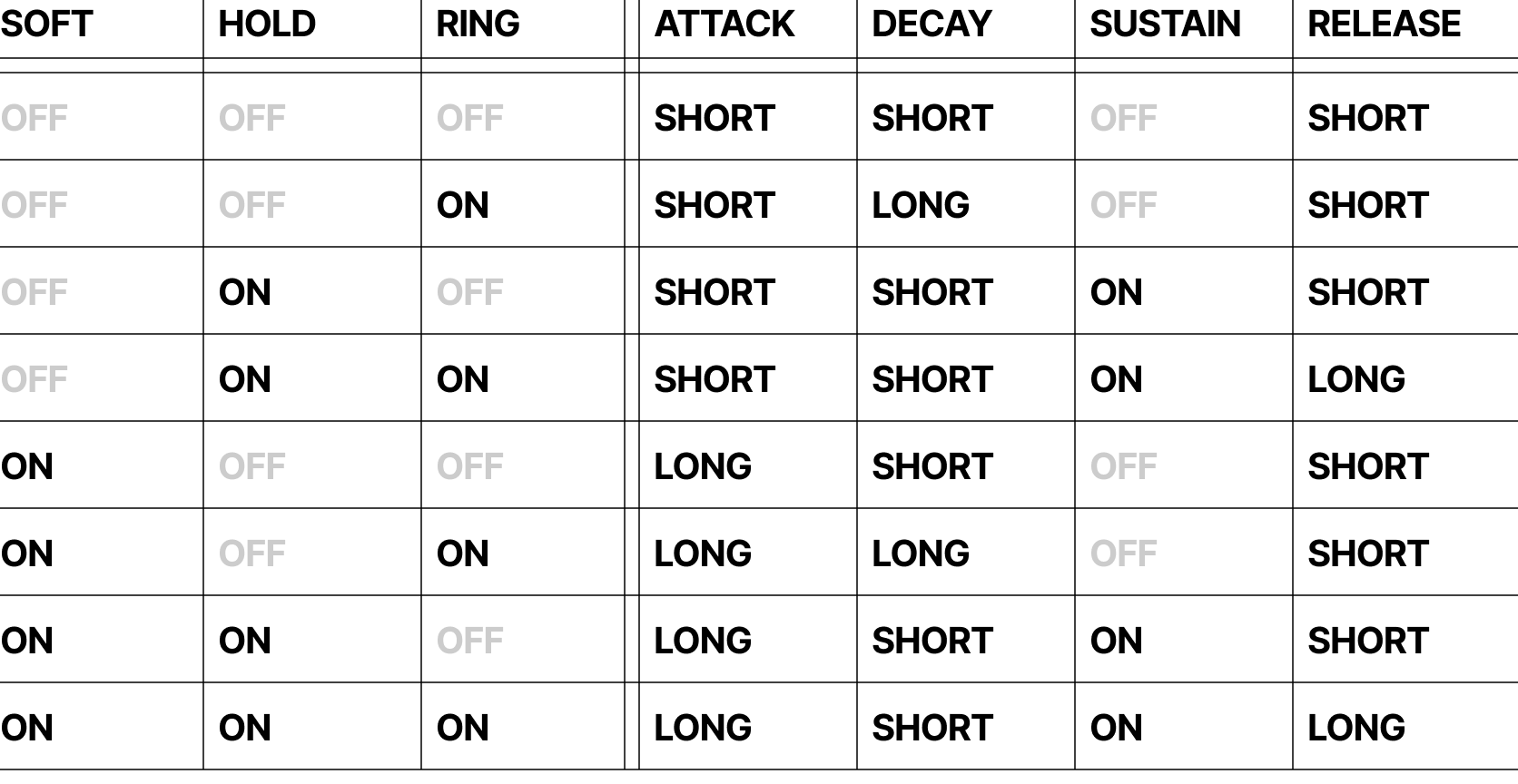
The three switches allow 8 combinations which cover the sounds you'd need most of the time, especially live. Each positions are carefully tuned to make musical sense: for example if all switches are off, the sound is short and plucky while turning on "Ring" creates a piano-like envelope: decays long if you keep the key pressed while dies quickly if you hit it fast.
Playground
The Playground switch routes the second oscillator to various modulation destinations, and setting the oscillator's pitch via the Tune knob alters the modulation. Additionally there are two LFOs — all of these can be used together to generate surprising sounds, noises or some random sonic mess. Due to the switch-based interface it's literally a matter of seconds to get back to a clean sound.
Look
I designed and built the circuit and the case of this synth over the last year. This blue one here is the second iteration which ended up in a wooden IKEA toolbox. It resembles an old multimeter or a vintage radio. It's kinda cool to see how it loses its saturation over time.
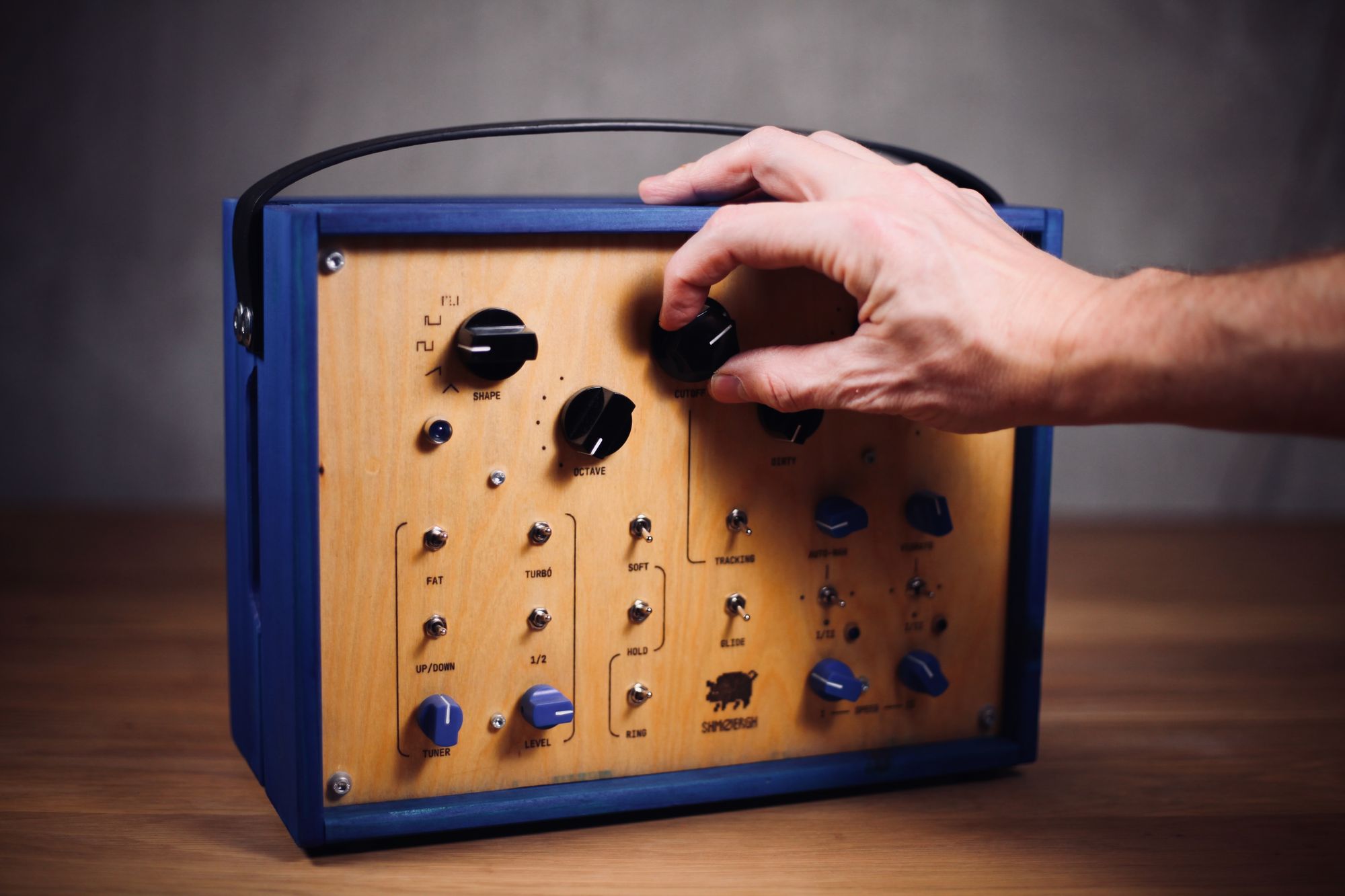
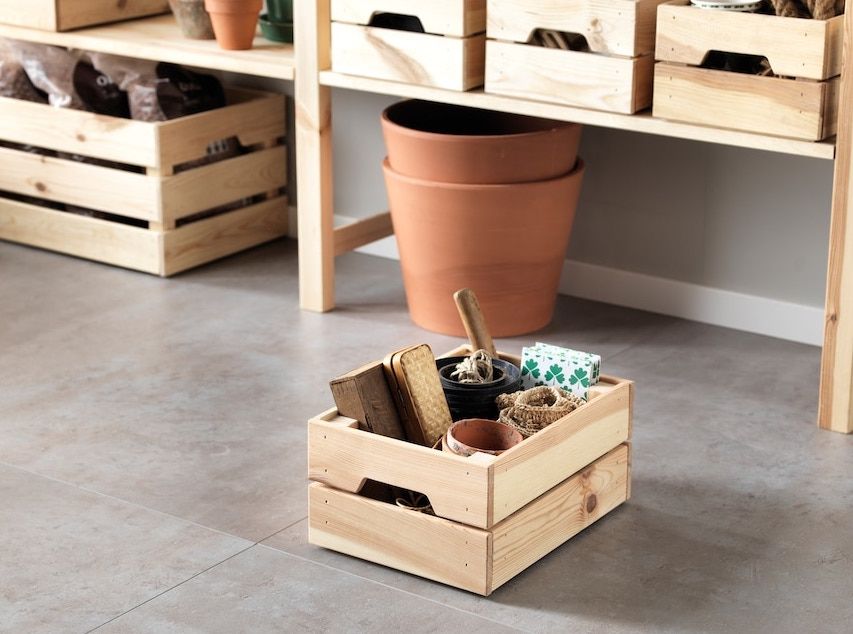
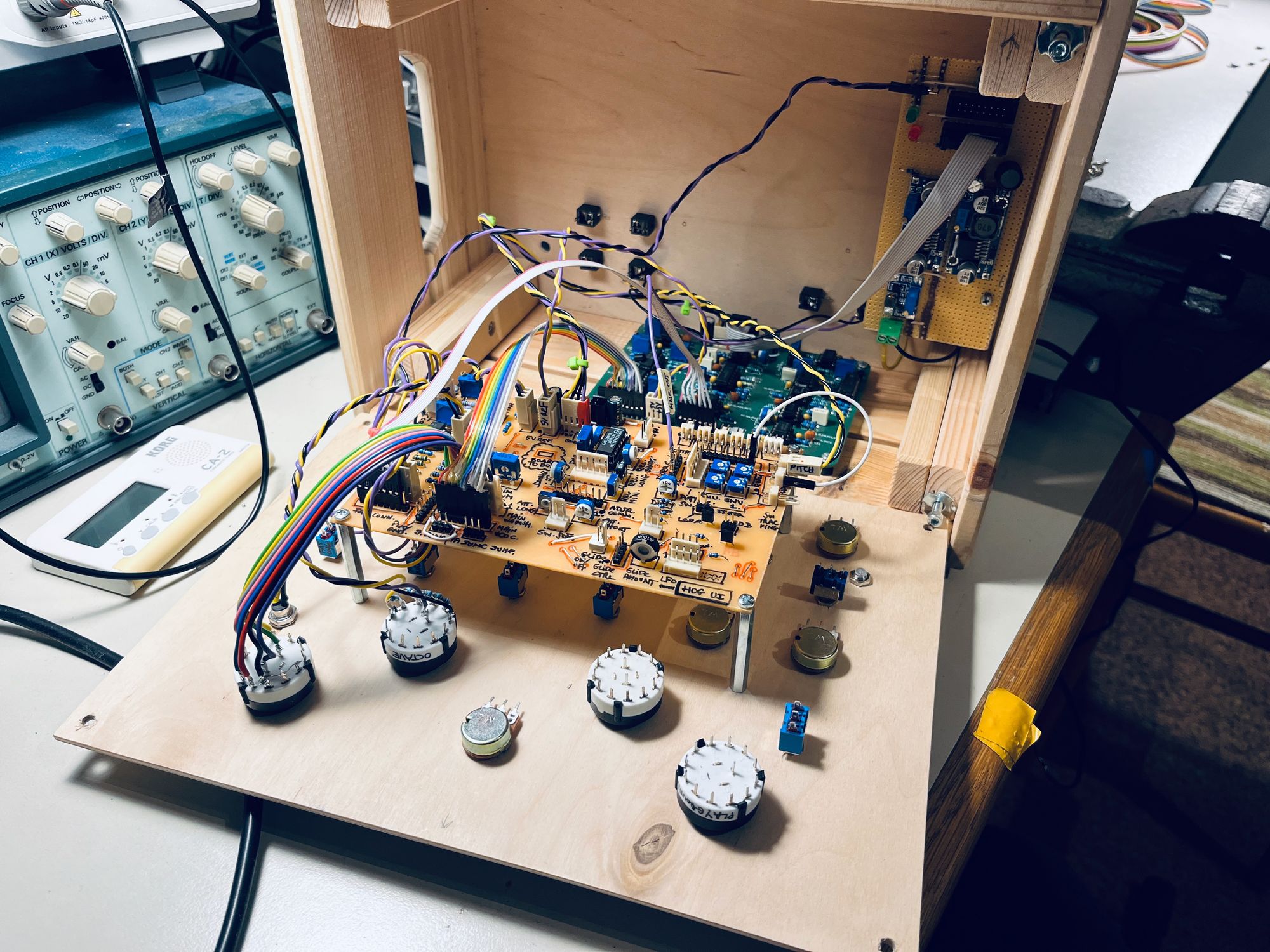
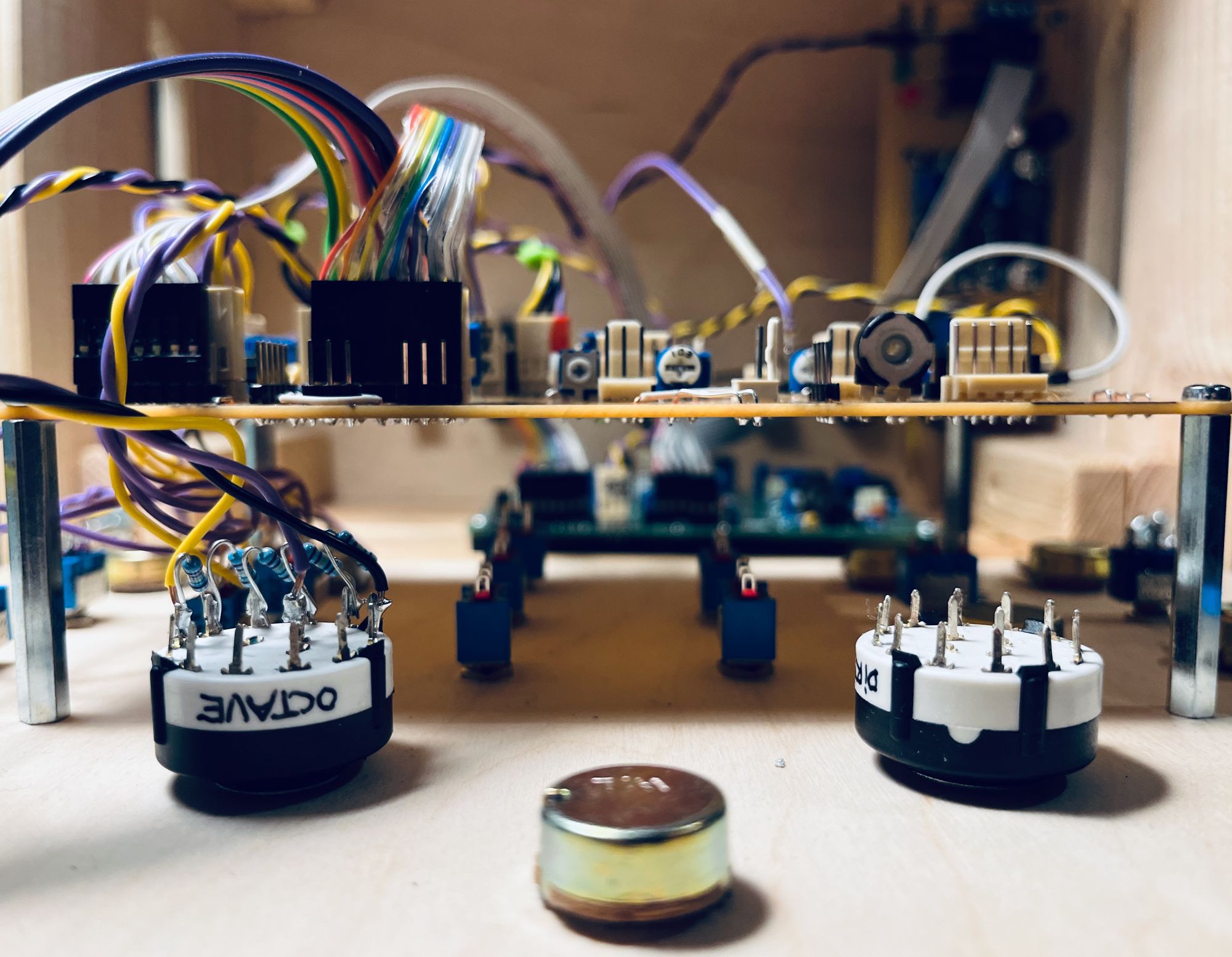
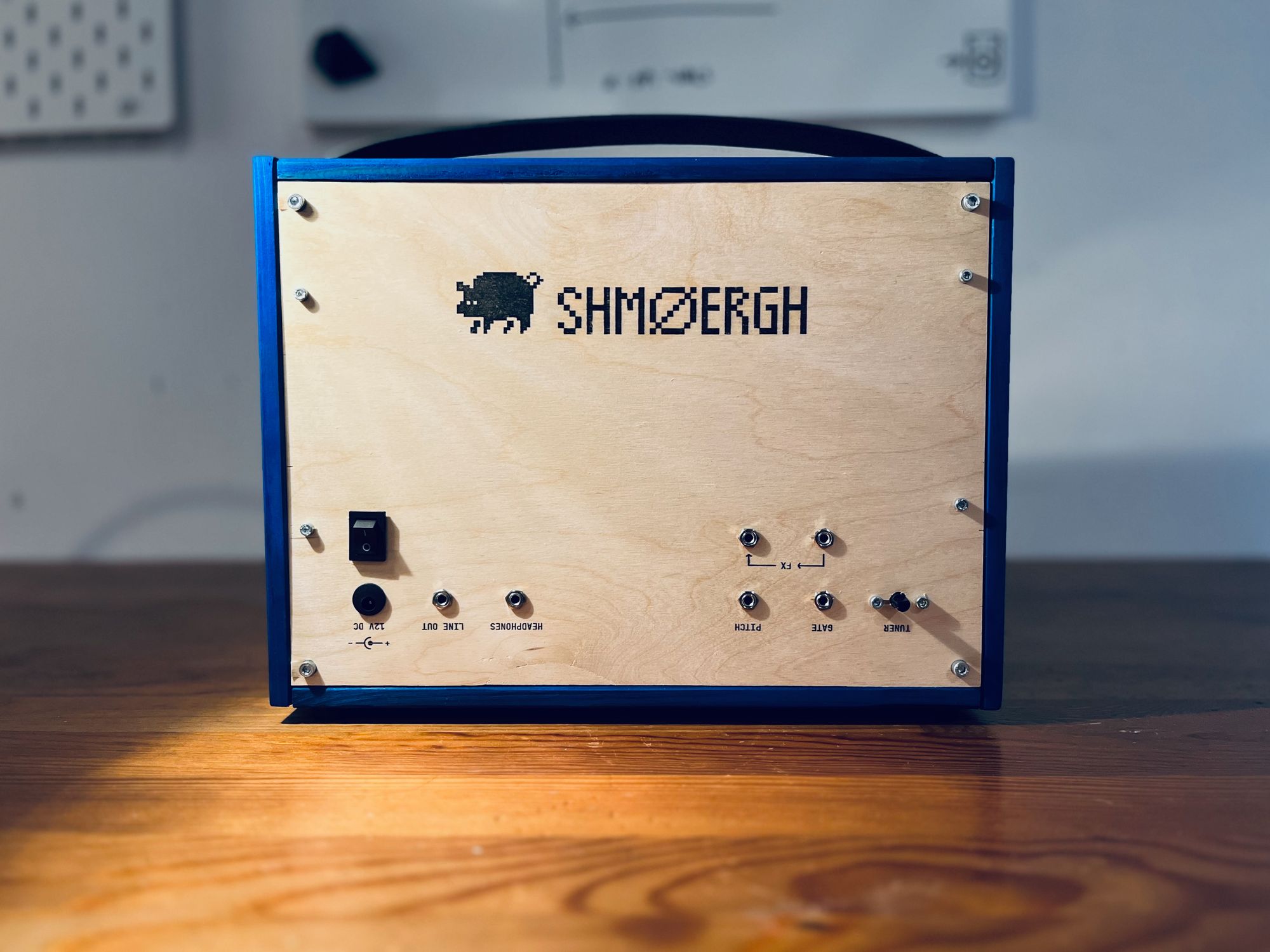
Synth in a KNAGGLIG toolbox by IKEA (top-left photo from ikea.com)
Earlier versions
I used an IKEA flowerpot as the basis for the first prototype. Its size is perfect and it's all metal so it's an amazing shield for sensitive circuits like the diode filter.
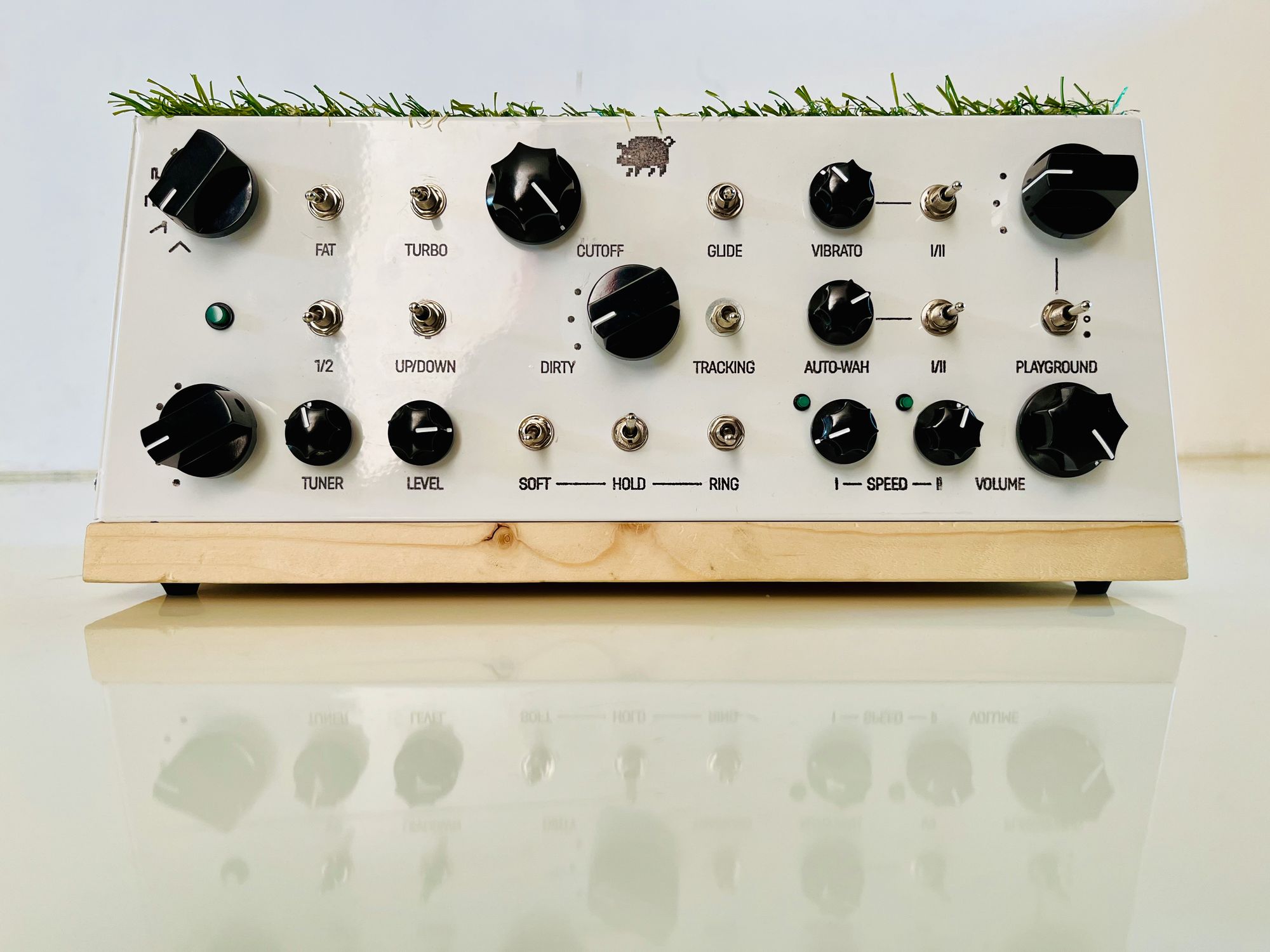
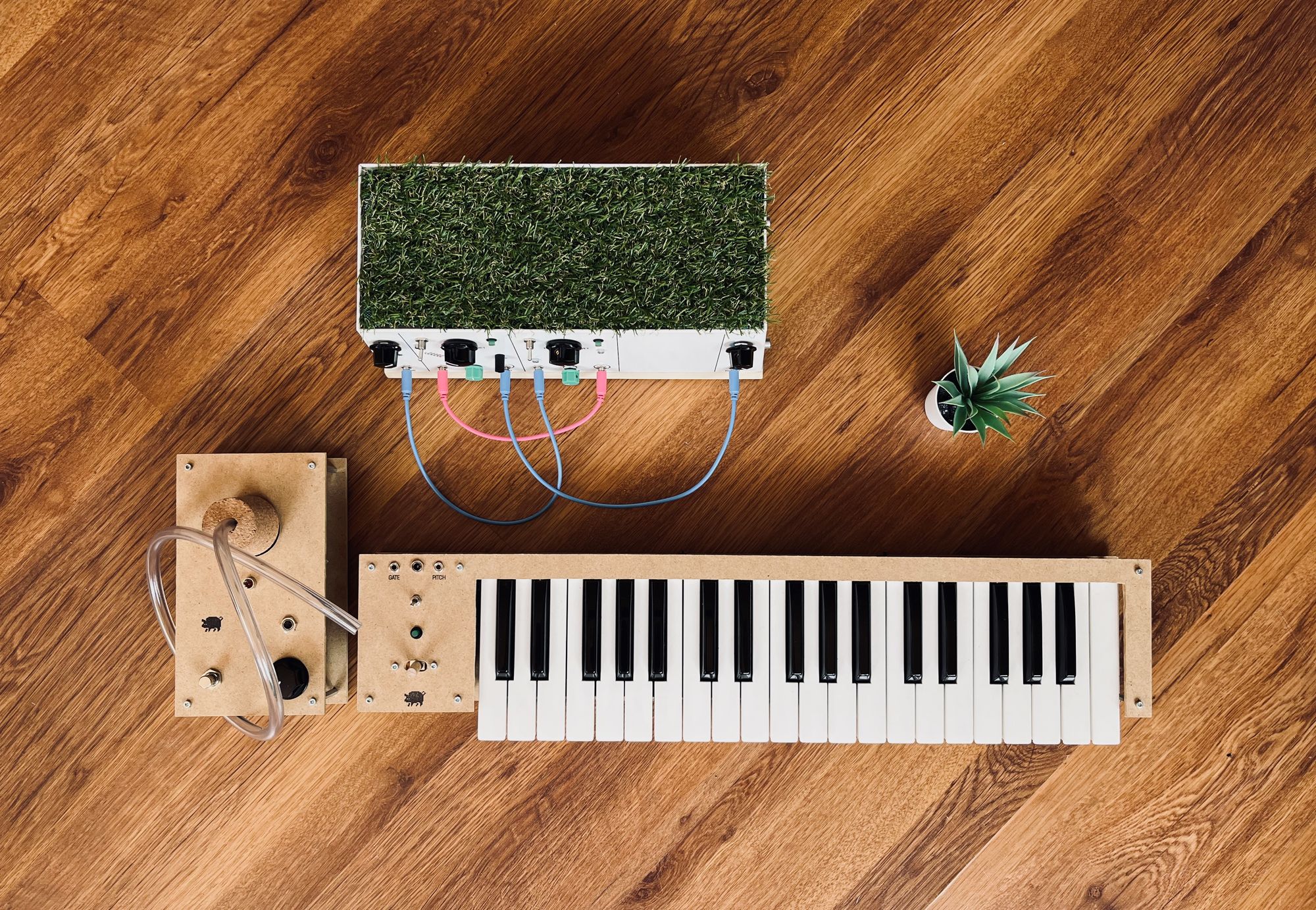
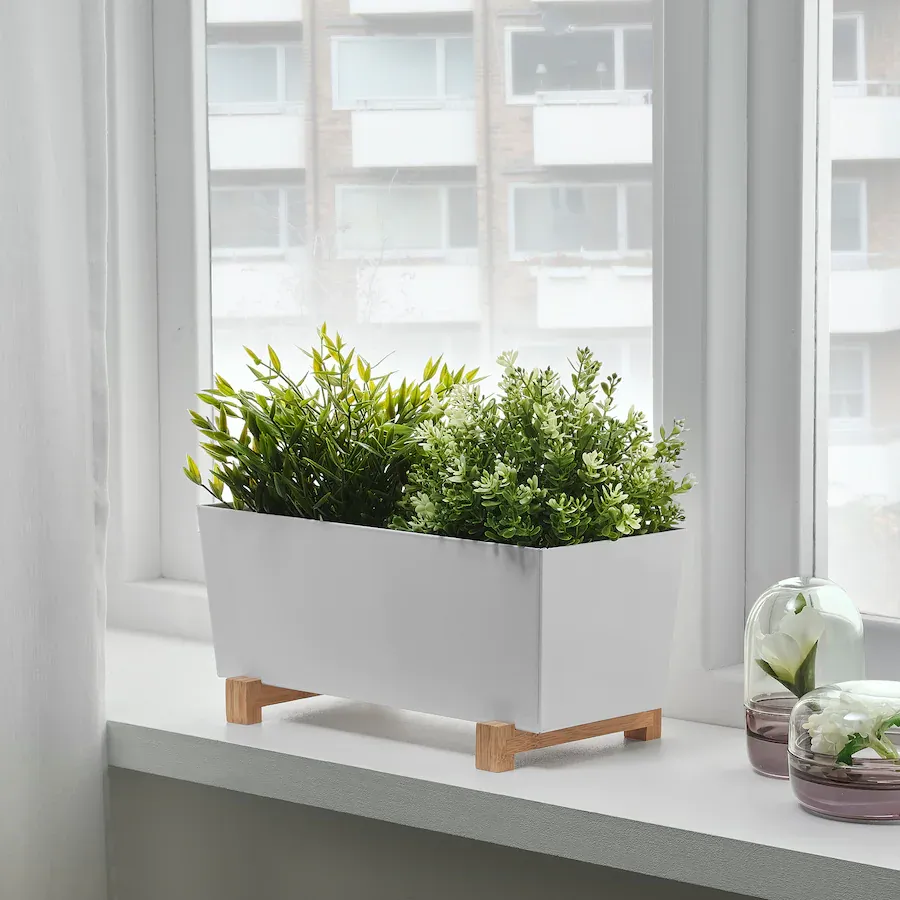
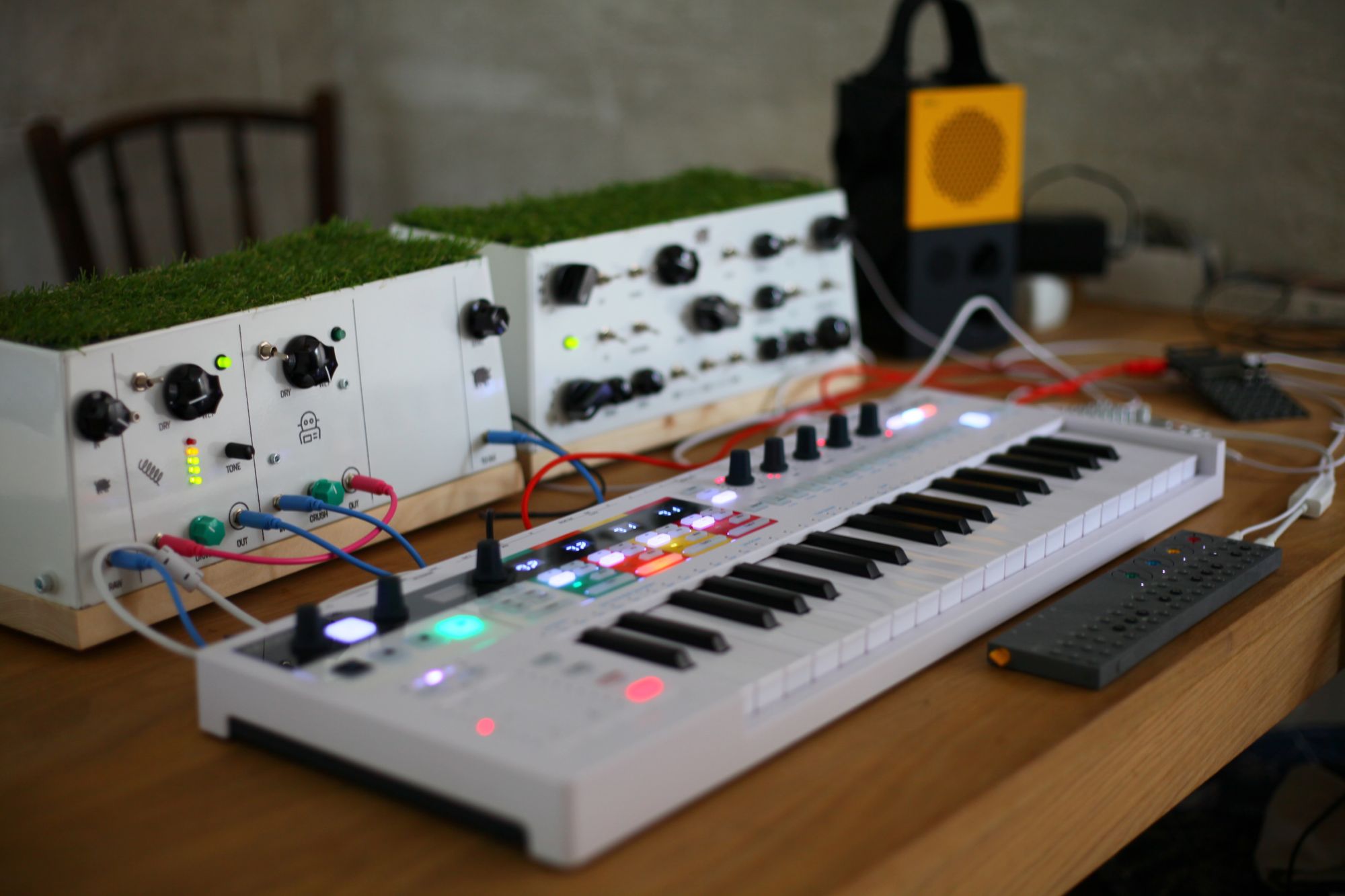
First prototype in a BITTERGURKA flowerpot by IKEA (bottom-left photo from ikea.com)
Even though the final version ended up in a wooden box, I still love this form factor, the material and the weight of the flower pot, especially with the fake grass on the top. It's just a fun thing to look at. BTW, the spring reverb and the bitcrusher was also built in a flowerpot like this so they make up a nice couple at the end.
